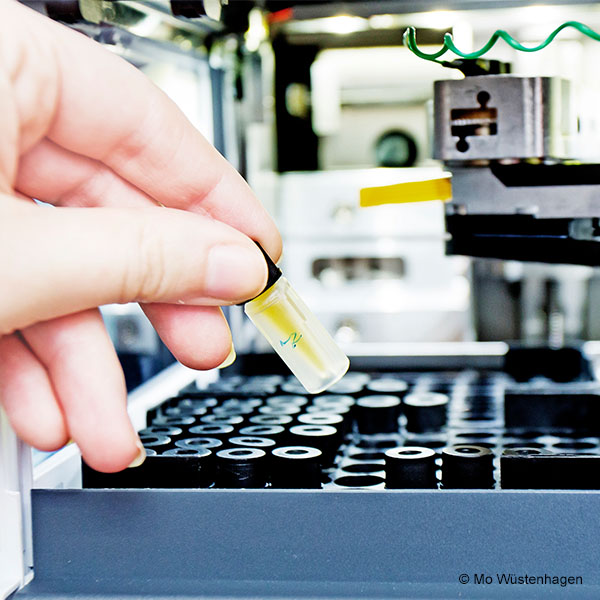New substance library in Berlin bundles chemical biology knowledge

In addition to Germany, other founding members of the project include Finland, Latvia, Norway, Poland, Spain, and the Czech Republic. Denmark will become a full member in 2019. In Germany, the Berlin-based Leibniz-Forschungsinstitut für Molekulare Pharmakologie and the Max Delbrück Center for Molecular Medicine in the Helmholtz-Association are participating, as is the Helmholtz Center for Infection Research in Braunschweig. These institutions have been working on the EU-OPENSCREEN concept since 2008. The Fraunhofer Institute for Molecular Biology and Applied Ecology in Hamburg is also involved. The project partners have set up the central office on the Berlin-Buch campus. Currently, 21 independent laboratories in the participating European countries are involved in the partnership.
External researchers benefit
To give its full name, EU-OPENSCREEN is the European Infrastructure of Open Screening Platforms for Chemical Biology. The central substance library currently under construction in Berlin is an integral part of the European Research Infrastructure Consortium (ERIC). It is not, unlike a library, containing books, but instead chemical compounds. These so-called compounds are stored in a large cold store on the Berlin-Buch campus and are available to external researchers working in the partner laboratories to test their biological effect systematically using high-throughput screening. In addition to 100,000 commercial substances, up to 40,000 molecules from academic laboratories will be added. The initiators expect that up to 1,000 European chemists who will use the organization's services will make their active substances available to the EU-OPENSCREEN ERIC.
The variety of naturally occurring, biologically active substances is enormous. This is why chemical biology persistently looks for new active substances in this natural arsenal that can specifically influence certain biological processes. For example, plant substances such as morphine or digitalis are very effective against pain and heart disease, respectively.
Molecule collection and grant application assistance
EU-OPENSCREEN project manager Dr. Katja Herzog from the Leibniz Research Institute for Molecular Pharmacology explains the special feature of the EU-OPENSCREEN ERIC concept for academic chemists: "The unique added value for chemists is that the biological activities of their compounds can be described in detail and their compounds can be identified as "hits". This may lead to new collaborations between chemists and biologists to further improve these molecules."
In practice, the partner laboratories receive copies of the substance library directly from the central substance storage for use with external user projects. Contracts regulate the extent to which the partner laboratories must pay a replenishment fee to the ERIC to ensure the preservation of the substance library. External scientists can submit a project application to the EU-OPENSCREEN-ERIC central office in Berlin and use the substance library for their projects in one of the partnering laboratories. The central office in Berlin will continue to build and maintain the physical substance collection. It also advises external scientists on grant applications and selecting a partner laboratory for testing the substances.
Algorithms ensure quality
The substances were selected based on a combination of computer algorithms selected and published during the development phase of the infrastructure. All commercial and academic compounds added to the collection must comply with these rules and filters. Overlaps with other collections of substances are to be avoided as far as possible.
Dr. Herzog sees another advantage in the new substance library: The development of chemical tool compounds requires suitable facilities, investments in equipment, and experienced personnel. All this is not available to the majority of researchers in Europe if they are not institutionally connected to an academic screening laboratory. "EU-OPENSCREEN ERIC integrates all the necessary resource requirements at a European level and creates the critical mass for the cost-effective development of new chemical tool compounds," she adds. In addition to their importance for basic research, some of these tools can also form the basis for the development of new drugs with the help of medicinal chemistry.
The Federal Ministry of Education and Research (BMBF) will contribute some €20 million to the project over a period of five years. After the EU-OPENSCREEN ERIC was established with international public funds, it wants to cover its costs through membership fees from member countries.
Our BIONNALE tip: Check out the EU-OPENSCREEN project presentation at BIONNALE Cooperation Track. https://bionnale2018.b2match.io



